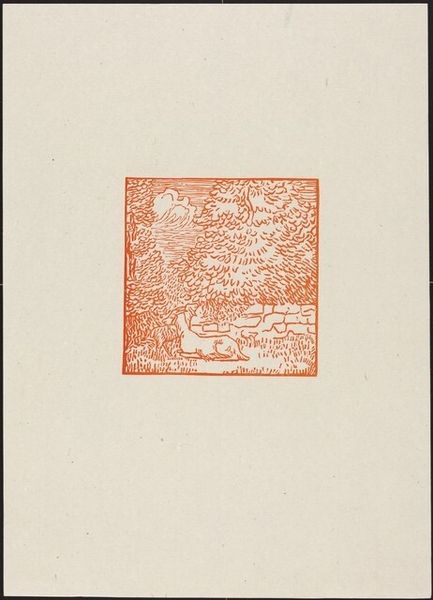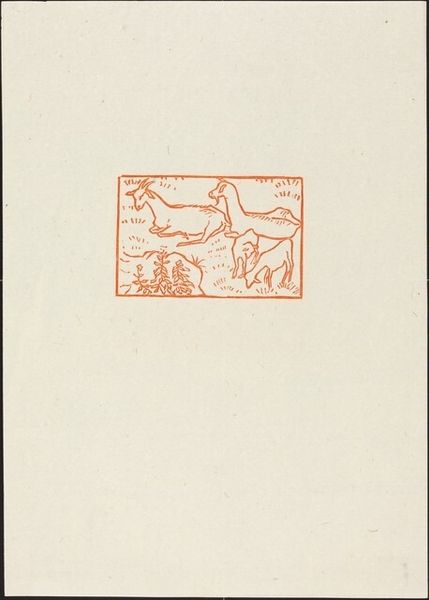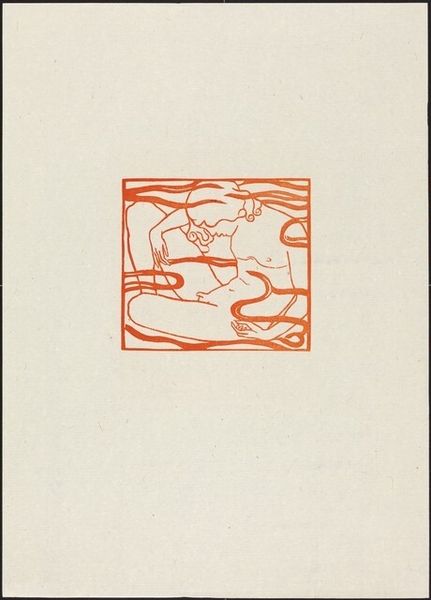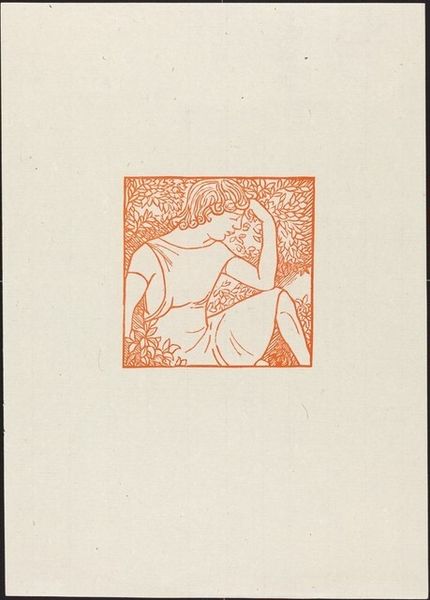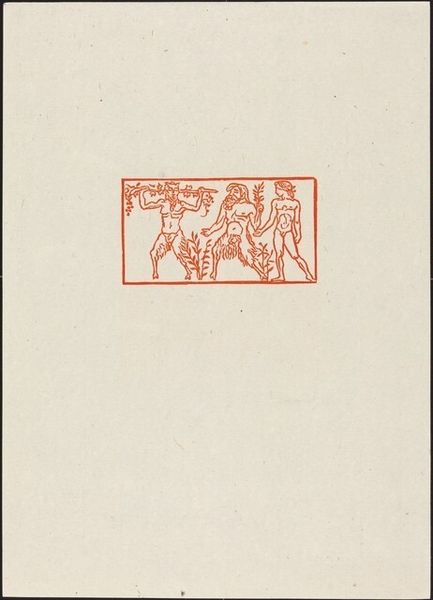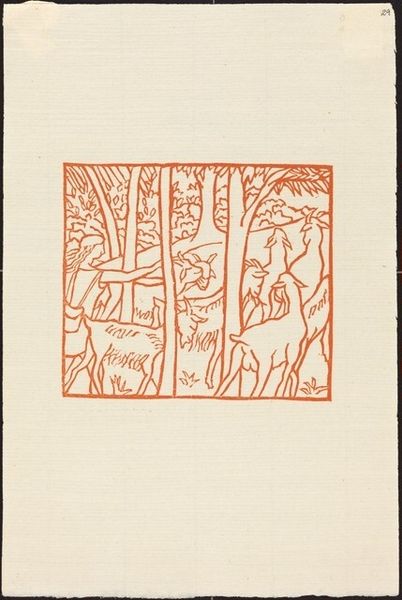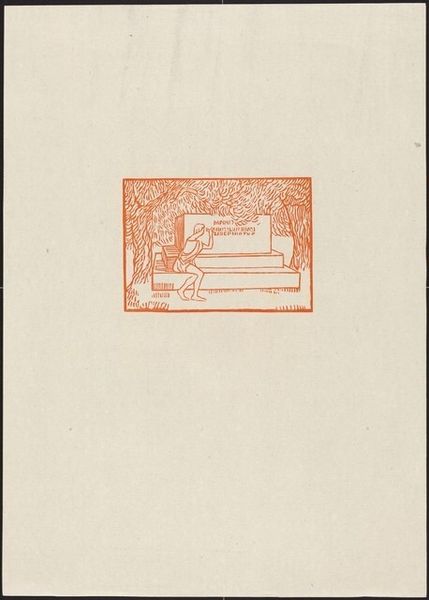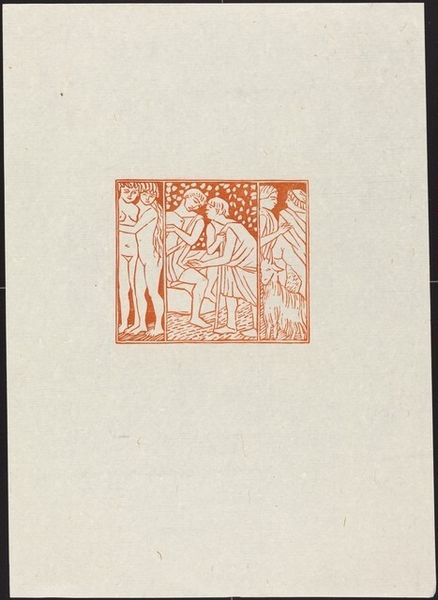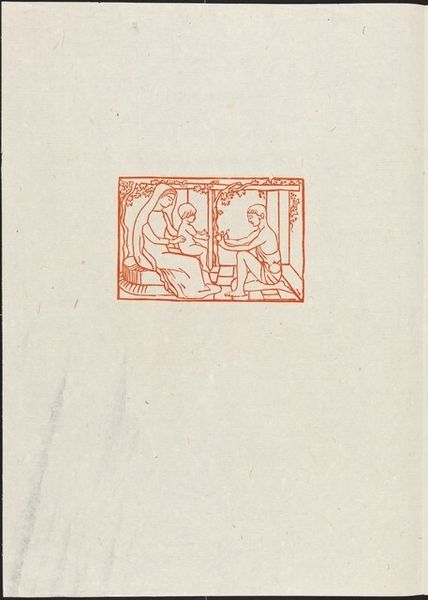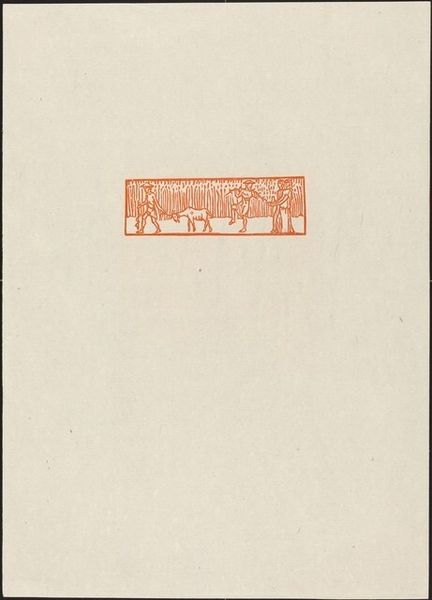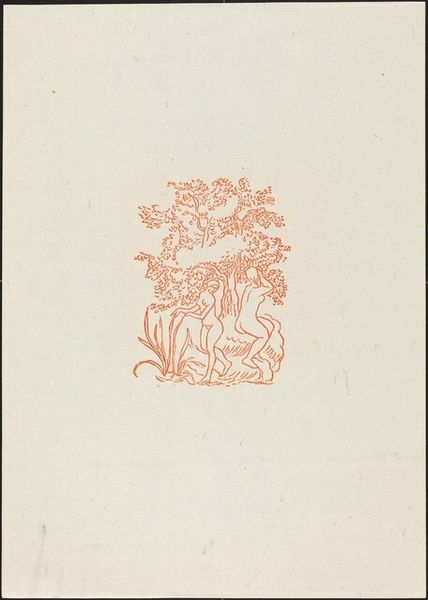
Ninth Eclogue: Galatea Daughter of Nereus (Galatee nue devant une fontaine) Possibly 1926
0:00
0:00
print, linocut, engraving
# print
#
linocut
#
woodcut effect
#
figuration
#
linocut print
#
nude
#
engraving
Copyright: National Gallery of Art: CC0 1.0
Curator: Here we have Aristide Maillol’s "Ninth Eclogue: Galatea Daughter of Nereus," potentially created around 1926. It's a striking linocut print. Editor: It exudes a sense of ancient mystery, doesn't it? The monochromatic medium amplifies a feeling of rustic timelessness. Curator: Indeed. Note how Maillol meticulously crafted a composition around form. The linocut's limited tones showcase a commitment to shape and volume in representing the female nude. Editor: I’m curious about this particular choice of subject and the implied power dynamic at play here. The nymph Galatea appears almost as a symbol, stripped of individuality, as the artist focuses so acutely on formal qualities of the body itself. One must wonder what narrative purpose Maillol seeks by situating the female body in this quasi-classical idyllic space? Curator: To push that idea further, Galatea could function as a metaphor within the artwork’s semiotic frame. She could symbolize ideal form, a conduit between art and myth. How does her static posture communicate these complexities? Editor: Interesting to think about myth, classism, and a sort of aesthetic deification within the classical tradition as being co-opted here! The social constructs implicit when examining female figures from antiquity is critical in interrogating such works as this. Curator: So it seems that the dialogue between her positioning, between medium, between art history and society is how meaning can take hold. Editor: Absolutely. It is these dialogues through which we approach it that inform our reception and criticism. Curator: A beautiful conclusion. It is indeed those dialogues within art that continuously expand knowledge of our world.
Comments
No comments
Be the first to comment and join the conversation on the ultimate creative platform.
